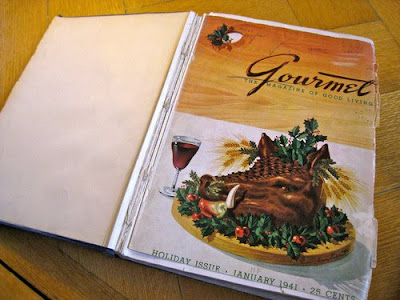When publisher Conde Nast sliced Gourmet Magazine from its line-up in October 2009, foodies nationwide mourned the passing of a culinary standby. The cooking bible had been published for nearly 70 years, providing inspiration to professional chefs, amateur cooks, and readers who didn’t know Escoffier from Le Creuset, but took a pornographic delight in superbly styled, sensual shots of sinfully rich repasts. But at least one librarian saw the magazine’s starvation as a chance to pluck a prize plum.
Marvin J. Taylor, director of New York University’s Fales Library, told the New York Times he “got on the horn immediately” when he heard that Gourmet Magazine’s gravy train was out of steam. Taylor knew that the publication’s library of cookbooks would be ripe for the picking. And even if the magazine was toast, the remaining crumbs could beef up his mushrooming Food and Cookery Collection.
Celebrated chef Mario Batali has promised to donate his personal papers to the library. “I would give them anything they want,” he said. Batali adds that the collection “matters because some of the most intimate and essential details of a society are made up of its attitudes about subsistence, luxury, taboo and knowledge all relating to its food experience.”
The cookbooks from the Gourmet Magazine collection will add more spice to a collection that serves up a record of American cookery from soup to nuts. Carol Mandel, Dean of Libraries and Archives for New York University, is convinced of the special collection’s importance: “There’s almost no topic that can’t be illuminated by studying food as a historical record.” And the proof in that pudding is provided by one of the more unusual volumes in the collection, a relic of the sinful ’70’s entitled Cooking for Orgies and Other Large Parties.





